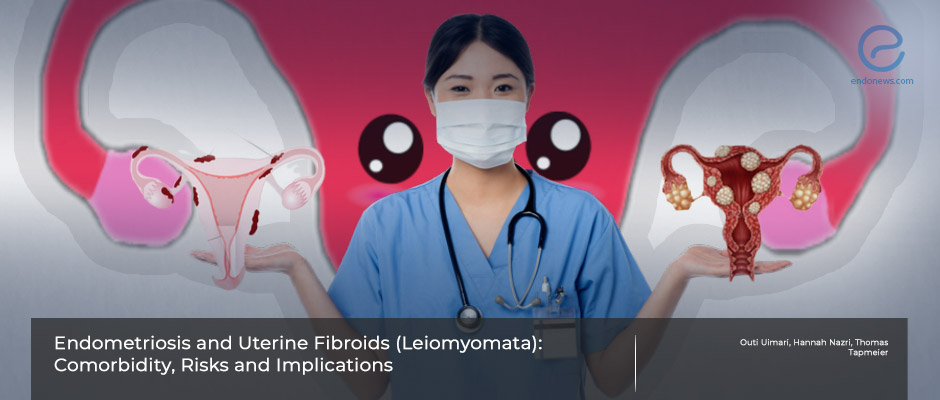Uterine leiomyomas and endometriosis may coexist yielding important clinical implications
Jan 9, 2023
Pathogenetic pathways of leiomyoma uteri and endometriosis have overlapping features
Key Points
Highlights:
- Leiomyomas of the uterus and endometriosis both may have similar symptoms.
- Endometriosis affects nearly 10% of women of reproductive age whereas uterine leiomyomas have an incidence of 70% in women in their 4th and 5th decades.
Importance:
- Medical scientific research yields associations between these two conditions since both have estrogen-related pathogenesis and increased comorbidity risks for women with endometriosis to also have leiomyomas and vice versa.
What's done here:
- This is a comprehensive review in which the comorbidities of uterine leiomyomas and endometriosis and implications for diagnosis, treatment, and risks are discussed in depth.
Key Results:
- It seems wise to predict a possible concomitant surgery for endometriosis during resections of uterine leiomyomas.
- Treatment of one condition while delaying the other one may fail to facilitate the patient’s status, especially in fertility patients, where ovarian stimulation could worsen concomitant endometriosis.
Lay Summary
Drs. Uimari, Nazri, and Tapmeier from Finland, the UK, and Australia have published their comprehensive review on the comorbidity of endometriosis along with uterine leiomyomas in the medical journal “Frontiers in Reproductive Health”.
The comorbidity of uterine leiomyomas and endometriosis has been put forward by various recent large-population observational studies. Comorbidity incidence is much higher in retrospective studies conducted in tertiary medical referral centers than is reported in medical insurance documents.
Both pathologies may yield severe pelvic pain, painful periods and non-cyclic pain, impaired fertility or outright infertility, fatigue, painful intercourse, and bladder and bowel dysfunctions. Surgery is a treatment option for both endometriosis and leiomyomas.
Endometriosis seems to affect about 10% of women of reproductive age, whereas uterine leiomyomas show an incidence of nearly 70% in women aged 35–49 years old. Medical research in the last decade has yielded important associations between these two conditions since both have estrogen-related pathogenesis. Besides, there is an increased comorbidity risk for women with endometriosis to have also leiomyomas and vice versa. It is also intriguing that recent evidence from classic and genetic epidemiology points to an association between both conditions.
The substantial comorbidity between uterine leiomyomas and endometriosis urges surgeons to include the option of concomitant operations for endometriosis during resections of leiomyomas. Treatment of one condition while skipping the other may well fail to heal the patient’s morbidities. This is of utmost importance in fertility patients where ovarian stimulation may worsen undiagnosed endometriosis. The medical arena is in need of more research projects on comorbidity and common denominators of endometriosis and uterine leiomyomas in order to increase and preserve women’s health.
Research Source: https://pubmed.ncbi.nlm.nih.gov/36304022/
leiomyomas fibroids endometriosis comorbidity

